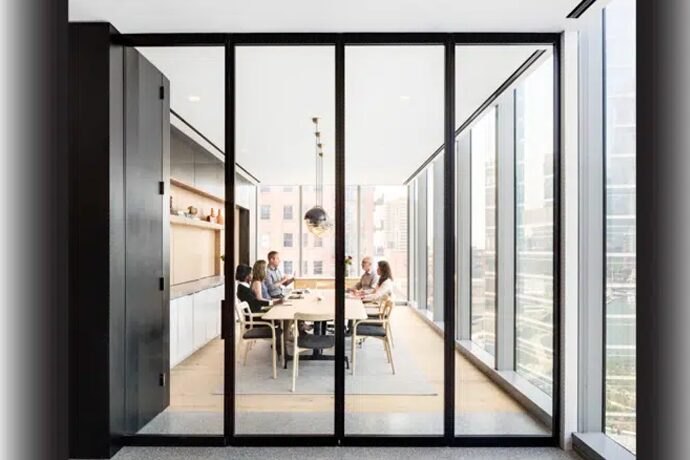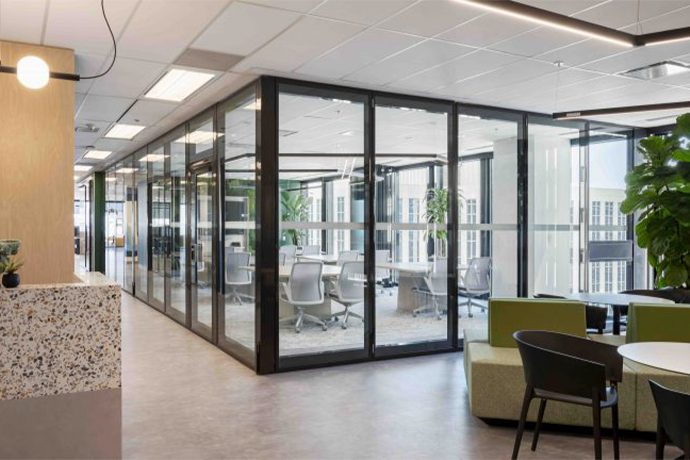BRAVURA NEWS – OFFICE DESIGN INSIGHTS
creating collaboration with operable and demountable walls



Modular collaboration spaces have garnered significant attention for their ability to offer flexibility in the face of fluctuating workplace requirements. These areas serve as hubs for teamwork, idea generation, and problem-solving, necessitating designs that can easily adapt to various tasks and team sizes. Operable and demountable walls provide the ideal solution, allowing architects and designers to partition spaces as needed while preserving the option to reconfigure layouts effortlessly.
One of the key advantages of operable and demountable walls lies in their flexibility. These walls can be easily adjusted to create open-plan environments conducive to group discussions or divided to provide privacy for focused work. By incorporating movable desks, modular seating, and configurable layouts, designers can empower teams to customize their surroundings according to the specific demands of each project or task at hand. Whether it’s a brainstorming session, client presentation, or collaborative workshop, the versatility of these walls ensures that the space can adapt to meet evolving needs seamlessly.
Furthermore, the integration of technology plays a pivotal role in enhancing the functionality of modular collaboration spaces. Modern workplaces rely on high-tech audiovisual equipment for presentations, video conferencing, and interactive collaboration. Operable and demountable walls can accommodate the installation of such technology, seamlessly integrating digital whiteboards, projectors, and communication tools. This technological infrastructure facilitates seamless communication and efficient sharing of documents and ideas, fostering a collaborative environment where creativity can flourish.
In the realm of hybrid workplaces, where remote collaboration is increasingly prevalent, the need for adaptable spaces has never been more pronounced. Operable and demountable walls offer a scalable solution that can easily accommodate shifting work dynamics, allowing organizations to optimize their physical environments for maximum productivity and creativity. By harnessing the power of these versatile design elements, architects and interior designers can create modular collaboration spaces that serve as catalysts for innovation, teamwork, and success in the modern workplace.
Operable and demountable walls represent a cornerstone of effective workplace design, particularly in the context of modular collaboration spaces. By prioritizing flexibility, technology integration, and user-centricity, architects and designers can create environments that empower teams to thrive in the dynamic landscape of contemporary work. As organizations continue to embrace hybrid work models and collaborative methodologies, the versatility of operable and demountable walls will undoubtedly play a pivotal role in shaping the future of workplace design.
